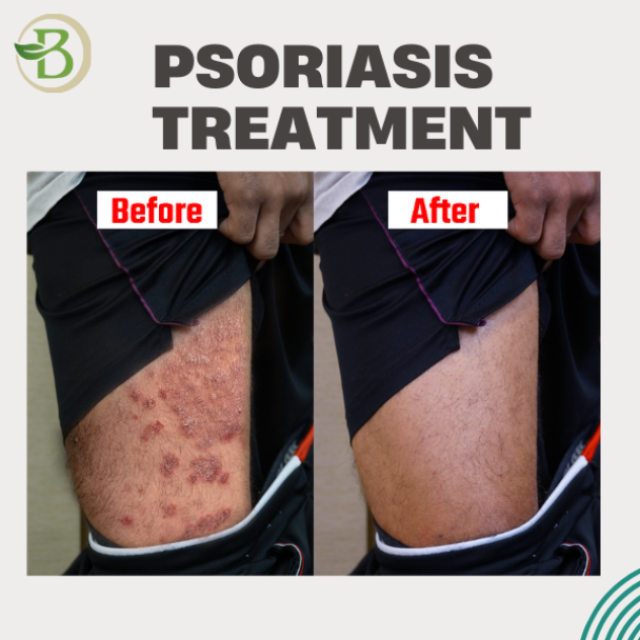
Bharat Homeopathy
Gurgaon, HR
Description
Homeopathic treatment for plaque psoriasis
Psoriasis is a long-lasting skin condition that is autoimmune. It means that problems develop when the body's immune system is active. If you have psoriasis, your immune cells activate and produce chemical substances. It is one of the diseases that begins from common things and then develops into a severe condition. It is possible to use homeopathic treatment for psoriasis. The homoeopathic health professional will examine your medical history before beginning your psoriasis treatment.
The most prevalent psoriasis accounts for around 80 per cent of cases. It is distinguished by the red areas of the skin that are coated with silvery-white scales. These are the most prominent signs of this type of condition. While these plaques can form everywhere on the body, the elbows, knees, lower back, and scalp are among the most affected regions.
Itching and Discomfort:
Itchy, painful and sometimes swollen areas can be found within the affected areas. Scratching can aggravate the condition and trigger more spots to form.
Common Sites:
Plaque psoriasis may develop anywhere in the body, but it typically affects the extensor surfaces, including the knees and elbows. A different area that is frequently affected is the scalp, which often expands past the hairline. homeopathic treatment for plaque psoriasis is highly suggested by patients who have been treated here since the homeopathic medicine for psoriasis is created from herbal and natural plants. It is 100% safe.
Triggers:
Infections, stress, cold climates, infections, medication, and skin abrasions are just a few of the triggers that may lead to or worsen plaque psoriasis.
Chronic Nature:
As a chronic disorder, plaque psoriasis tends to develop over time. The severity of symptoms may differ, and there are periods of flare-ups and the possibility of remission.
Nail psoriasis:
A particular type of psoriasis that affects nails is called nail psoriasis. The nails and the surrounding tissues can experience a number of changes due to the condition.
Nail Changes:
The appearance of nails may vary in different ways because of nail psoriasis. Pitting (minor holes or dents on the nail's surface) lines, discolouration (yellow-brown staining), and nail thickness are all common indications.
Pitting:
One of the features of nail psoriasis can be pitting, that is the formation of pits or small craters on the nail's surface. Although pits can be insignificant, they can affect the nail's appearance.
Onycholysis:
"onycholysis" describes how the nail plate and the nail bed split. Onycholysis, which results in an unnatural white spot beneath the nail, is possible in psoriasis.
Oil Spots:
Tiny patches of yellowish-orange pigment on nails, referred to as "oil spots", can occasionally appear. These spots, which could be a characteristic feature of nail psoriasis, can be caused by the accumulation of cellulite on the surface.
Certain homeopathic remedies for psoriasis we can use to stop the onset of psoriasis.
It is also possible to utilise turmeric to reduce the effects of skin conditions such as scalp psoriasis. Treating skin issues like neem and other herbs can help with psoriasis and Eczema. If you're unable to locate a neem plant and cannot make use of it, it could be taken in bottle form. Additionally, you can make use of the juice of aloe vera. It's beneficial for dealing with skin problems that are related to the condition known as psoriasis. Many people took scalp psoriasis homeopathy treatment from Bharat Homeopathy Clinic, and now they are free from their problems.
Reviews
To write a review, you must login first.


